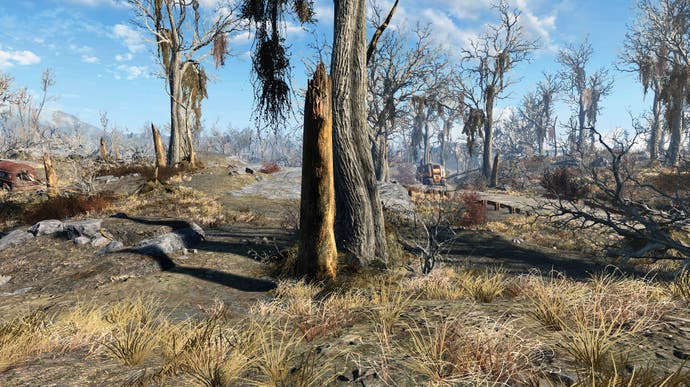How realistic are the post-apocalyptic landscapes of video games?
From The Last of Us to Fallout.
Barren wastelands. Decrepit and abandoned towns. Desolate landscapes ravaged by time and trauma. Recognisable landmarks slowly but surely reclaimed by nature after our demise. Games have consistently embraced the post-apocalyptic setting. It invites excitement, apprehension and a deep curiosity, and plays on the thought-provoking hypothetical, the 'what if?'. And when these post-apocalyptic environments and landscapes are incredibly detailed, they can result in great efficacy and power.
Of course, all games use artistic license to a degree to ensure their pacing, setting and characters are primed for our experience and, as a result we give them a healthy amount of leeway when it comes to their landscapes. But just how much artistic license is an interesting area to investigate. Have the developers ruthlessly stuck to an accepted setting or set of circumstances? Or have they created their own unique setting from scratch? Or, have they landed somewhere in the middle? Overall, how 'accurate' is the representation of their chosen hypothetical landscape?
Games' post-apocalypses give us a window into what might happen should everything go down the tubes for humanity, but also the earth. There are people who are experts or who have written about such scenarios, and one of them is writer Alan Weisman. Some fans of The Last of Us may know his book, The World Without Us, which helped inspire Naughty Dog and its portrayal of a post-apocalyptic, or human-less, USA. His book details how the world would change immediately after a sudden disappearance or decrease in human intervention.
Speaking with Alan - though he is keen to make it clear he isn't a scientific authority but a writer who researched this area thoroughly by speaking to and spending time with experts - and a few other experts, we can compare the hypothetical fidelity of some post-apocalyptic landscapes to what we know.

It's easy to become attached to landscape of The Last of Us. The way nature reclaims the land and creeps over our manmade intrusions softens everything, creating a world that is green, lush and full of life. It demonstrates the effect of time on a short scale, revealing the changes that occur and the powerful characteristics of a post-apocalyptic landscape. Predominantly in the towns and cities there is a clear indication of how nature would begin to take back, with remorseless power, what was once its own, and what those initial changes would be.
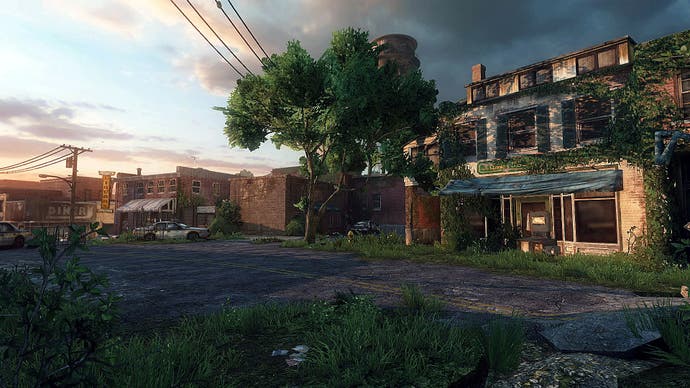
Mirroring Joel and Ellie's journey, Alan and I 'walk through' Boston first, using a few key pictures that show the city at its most decrepit and derelict. Generally, the aesthetic here of deteriorated materials, semi-collapsed buildings and the slow take-back of nature is all pretty accurate. Natural deterioration such as brickwork failing and windows breaking both from no maintenance and from flora or fauna would be "perfectly normal" according to Alan. Birds making nests farther into buildings and then leaving deposits from which plants and trees would grow - in turn causing their own damage as they grow into and reclaim the area around them - would be expected, and this is what is on show in the first parts of the game. The collapsing of hard surfaces, pavements and roads, too would be expected after 20 years of no maintenance, particularly if there was some pre-existing marshland underneath desperate to return. Add to that the freeze-thaw cycles of the area, and it wouldn't be surprising to see asphalt areas crumble and give way.

The one doubt Alan has is the flooding outside of the capitol building. He says: "if there was that much water in Boston, at that particularly point, then it would have to be sea water due to climate change and rising sea levels - not from burst pipes." This would mean indigenous plants in the area would suffer enormously and give way to others more suited to the saltier, marshier conditions that would result. It's relatively unlikely such an amount of water would stay there anyway, Alan says, as the location is comfortably high enough that water would run off downhill.
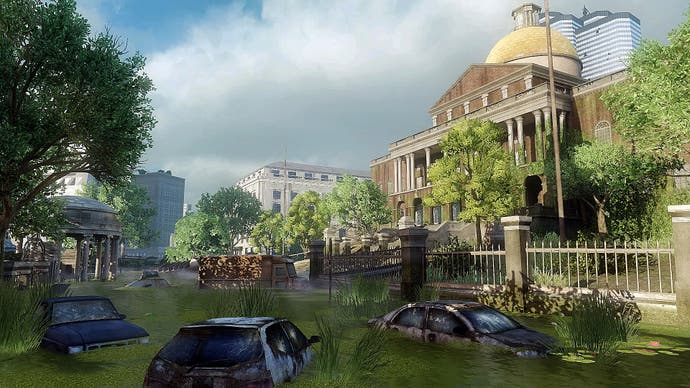
In Pittsburgh, the similar aesthetic of nature reclamation and the degradation of buildings is consistent and just as credible. Alan notes a picture of the hotel Joel and Ellie travel through does a particularly good job of showing what happens when glass atrium roofs and windows are broken and the outside and inside almost become one. Soil, rubbish and the impact of wildlife let plants take hold in these buildings and smash their way through the remaining walls and ceilings and smother the buildings from within.
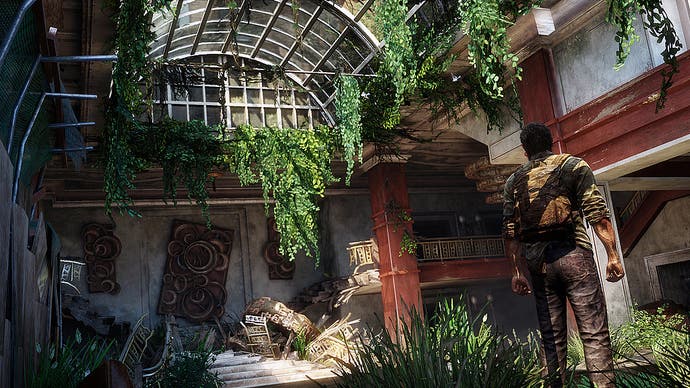
More particular to Pittsburgh, however is the flooding shown - both in the famous marketing artwork as well as near the hotel in the game - and Alan is not convinced, again, it could happen solely from neglect and rainfall. "It almost looks like a climate change event," he says. Intrigued, I sought out advice from the city government of Pittsburgh. Alexander Pazuchanics, assistant director of Planning, Policy, and Permitting in the Department of Mobility and Infrastructure, sheds some light on what The Last of Us shows. He credits the hotel area as being pretty accurate and identifiable, both in terms of the geography and the character of the place, and the flooding shown. The urban vista looking down a street toward one of the bridges is "a pretty natural Pittsburgh sensibility", according to Alex. The level of flooding seen here is more believable, too and could easily be achieved "by a water main or pipe line break, particularly if there were subsidence issues where the road meets the river". As the water gets deeper the nearer the street gets to the river this credible in-game area is further backed up by another characteristic of Pittsburgh: the "bathtub". "This is an area that sits below river level, so only a small increase in river level causes this place to flood," Alex tells me before also describing how it has happened multiple times this year already and even allowed some citizens to canoe up the submerged roads.
On top of the lie of the land, the dams and hydroelectric systems upriver and the near-200-year-old systems in the city could all easily have the impact on Pittsburgh we see in The Last of Us, given 20 years of little-to-no maintenance. "One of these failings on their own may not do a spectacular amount of damage, but in the longer term, more lack of maintenance and more failings would easily create this picture," Alex says, ominously. This increase in water in the city would in all likelihood lead to more standing water and more greenery too, much like the game portrays.

Lastly, the abandoned highway and sliproad area Joel and Ellie use to drive into Pittsburgh is also recognisably Pittsburgh. It's believed to be the Boulevard of the Allies. The road layout is familiar to Alex, who says "that level of overgrowth on major roadways is totally believable" given 20 years of uninhibited freedom. The lush green specimens moving in from the edges of the highway and sporadically through cracks are both areas where water, dirt and debris could collect at first.
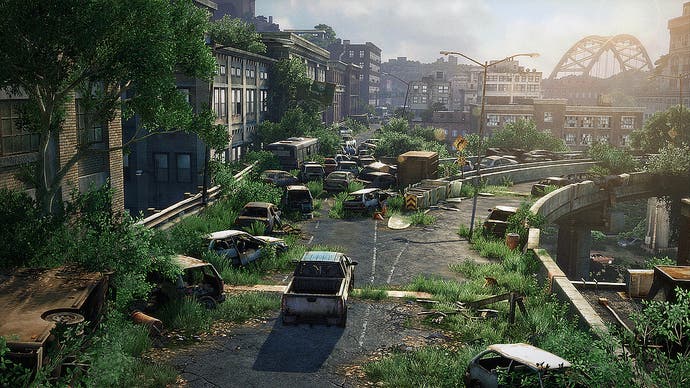
The location for the game's climax, Salt Lake City, is, unfortunately, not as accurate as the previous locations. After seeing some images from the highway area at the beginning of the chapter, Alan immediately comments on the foliage looking too lush. "Salt Lake City's is a very dry climate, it's basically the desert!" he says. "The prevailing natural landscape of that area is a desiccated and dry one." This means we'd expect to see brushier, grassier type of plants - or at least drought-tolerant ones.
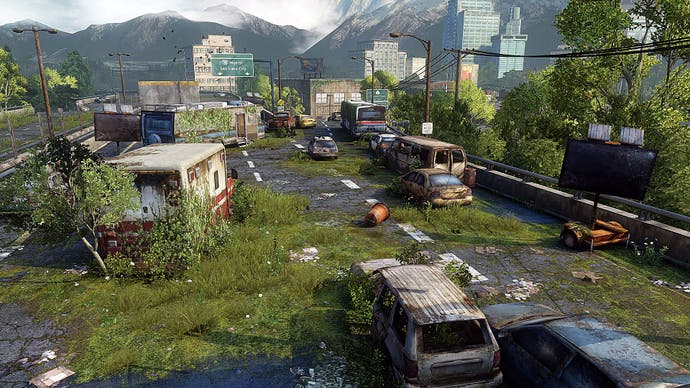
Chris Norlem, a construction program manager for the government of Salt Lake City, passes his eye over some images and offers some local knowledge. He, too is quick to say the vegetation looks too lush and doesn't match the climate given the low amount of precipitation the area receives every year. In fact, on top of the dry climate, there wouldn't be much chance of seeing that much greenery on the highways due to the distance from the ground and the wind clearing debris and soil. On a wider scale, "after 20 years the whole landscape would revert back the Northern Utah conditions. The desert would eventually reclaim the area and it would be very dusty - think American Old West movies," Chris says.
Looking elsewhere, Chris recognises the structures and streets as believable and accurate, but the greenery, again, as questionable upon closer inspection. "Climbing plants already existing might thrive for a while on the north side of buildings but would likely die off if they were not near a natural water source," he says. The weather and climate of the area just wouldn't support such lush and deciduous-looking specimens.

Overall though, Naughty Dog's implementation of a post-apocalyptic world, where human interaction and influence ceases with immediate effect almost overnight, is accurate. It is true to how Alan describes the world in his book, and how things would change immediately after we stopped manipulating, monitoring and fighting back nature, and the fidelity of this is deeply ingrained into the landscape.
Fast forwarding from The Last of Us' landscape portrayal, we arrive at Guerrilla Games' Horizon: Zero Dawn, which demonstrates how time, at a large-scale, impacts and changes the natural landscape after the influence of man is diminished and mother nature takes back what was her's. The landscape's design includes accurate plant life and lands, giving its 'post-post-apocalypse' credibility alongside astounding natural beauty.
Alan starts off honestly: "Well, you know, it's just anybody's guess," he says. But he goes on to say the mix of deciduous and evergreen foliage does look reasonable, despite us having no idea how 1000 years of more or less CO2 would impact the landscape. The mainly-pine forest is the main talking point here due to the species on show and the lushness, height and density of it. Alan says experts nowadays lean toward a drying out of Colorado, and because of this it is not known which kind of vegetation will dominate the area. As Colorado dries out now, more and more coniferous forests are suffering from fires. "A fair number of ecologists would bet there might not be any tall coniferous forests in the western US as it continues to dry out and fires are more common," he says. "If this where the case, it would result in a much lower, brushier kind of foliage, more fire resistant and heat-adapted to ensure it survives in that environment." So, not what is on offer in every area of Horizon's landscape, but what is on show in the drier regions and their expanse.
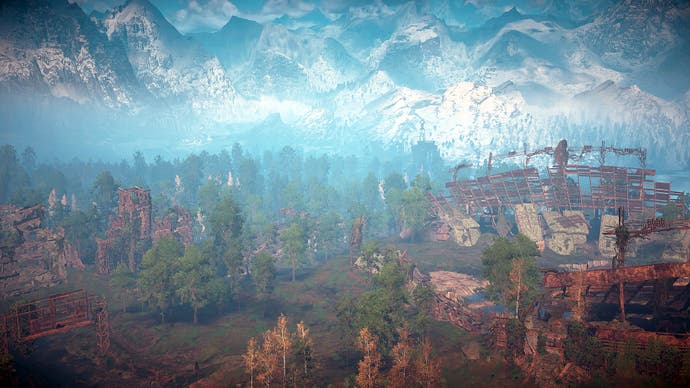
Areas showing the ossified manmade structures and areas where the ground is hard and rocky, Alan admits, are "very credible". It ties in closer to the school of thought that Colorado is gradually drying out due to global warming.
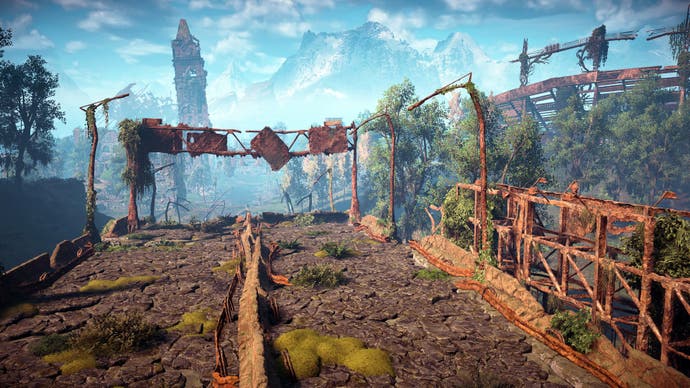
As a direct contrast, areas where plants are lusher and vivacious do not match this prediction, so have a question mark hanging over them. But these undeniably-pretty areas, which combine the manmade and the natural such as the lakes and ponds that have been created around the base of buildings or collapsed roads that support lilies, marginal plants and ornamentals, are, "based on current climate regimes and predictions, and species, realistic," according to Alan. "If the climate and any change didn't vary too much, then this could certainly happen." This could be remnants of the parks that were in the cities, particularly if they were naturally forming ones as this would be the natural behaviour of the water.

As an aside, I ask Alan about the plant species that might survive best after centuries of no control and no intervention by man. Applying this both to The Last of Us' short time-scale and Horizon's longer one, the progression seems to make sense: in the early periods, vigorous growers of all kinds would thrive - think bindweed, knotweed and grasses - but in the longer run a differentiation between natives and non-native species would occur. In the USA for example, imported English ivies would be out-competed by the native poison ivy and Virginia creeper. The invasive quick-growers would win the battle, but indigenous plants would win the war, so to speak.
There's no denying Horizon's post-post-apocalyptic world is a stunner. There is a particular beauty about nature reclaiming the world after such a long time, and this is enhanced by the manmade structures - all completely alien to Aloy, but not to us - still just about hanging on. The accuracy of Horizon's world is much harder to nail down. Who knows what time, global warming and nature left alone on a global scale would do to the landscape? However, the developers at Guerrilla have had a decent stab at predicting the far future post-apocalypse, showing a good variety of species and vegetation types for the area, hints of areas drying out, water gathering in places, and, of course, the decaying bones of manmade structures. Horizon is a fine, post-post-apocalyptic landscape.
Adding trauma to a short-ish timescale, Metro's bleak and oppressive, yet clear post-apocalyptic landscape is extraordinary. Thick with atmosphere and a strong sense of place, the world collides with plot brilliantly. You can almost feel the misery, the greyness and downright hopelessness in Metro's world. Through revealing trips to the Moscow surface, we see the devastating impact of landscape decay and recovery following immense devastation. But is it an accurate representation?
Metro's central Moscow setting limits the landscape to urban environments: streets and built-up areas as well as parks and, of course, the open landscape areas scarred by the bombs. This trauma is represented two-fold: by the impact of the immense blast and the catastrophic amount of lingering radiation. This impact is a powerful image and hits us, as Artyom in the game, as well as Alan in the images I show him, hard and immediately. Seeing images of downtown Moscow from the game, Alan quickly says Metro looks "pretty realistic", even down to the crashed planes. The devastation and damage displayed here is believable: the buckled streets, skeleton-remains of buildings and torn-apart landscape with deep gashes and crevices - all made worse by a nuclear winter. However, as we might expect, the plants on show are also credible. The few we see display herculean effort and persistence by breaking through concrete, roads and wreckage.
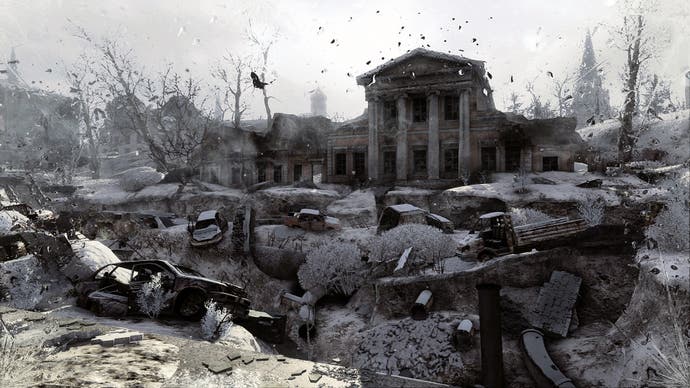
The level of irradiation is obvious - the air remains toxic to the level of lethal. The effect of this on plants would be "some stuff would have survived, and some wouldn't be doing so well", Alan says, bluntly. After the hit and the radiation, in the first instance in the immediate vicinity, it would be safe to assume everything dies. As a point of reference, at Chernobyl, Alan tells me, "plants in the immediate vicinity of 500 metres or so, just died straight away." Aside from the blast damage, the radiation is simply too high for plants to tolerate. What results is a scorched earth look, among the ruined buildings and roads. But plant life is incredibly resilient - even in the worst conditions. Therefore, it's not unbelievable that, as is present in Metro's Moscow, plants would come back and sooner than one might think. Using Chernobyl as a guide, plants farther from the epicentre of the radiation would return in irradiated form. In the village of Pripyat - a ghost town in northern Ukraine that cannot be inhabited by humans for many thousands of years - garden and park plants took over the landscape, completing a vigorous reclamation and green transformation of the once bustling worker village. When Alan visited in 1993, everything looked "really lush", he said. The species you'd expect to be present were there despite taking an enormous hit in the first instance and being highly irradiated since. It turns out Metro's post-nuclear plant life is pretty accurate.
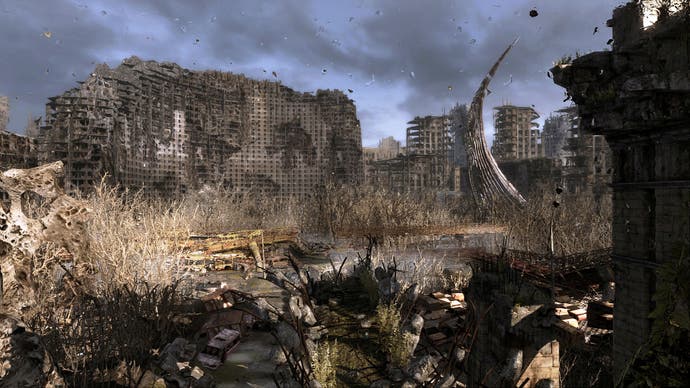
Not far from Chernobyl, where Ukraine, Belarus and Russia meet, is one of the most fertile points in the old Soviet Union. "It was a real breadbasket for them," Alan says. After the Chernobyl incident and the radiation spread - across all of Europe but with Belarus suffering the brunt of it - the landscape didn't change much aesthetically. Everything remained, or quickly returned to being, green, verdant and full of life: "it all looked utterly gorgeous with wheat, corn and other crops growing bountifully, until you turned the Geiger counter on and everything was horrendously radioactive."
Radiation can be tolerated by plants and while some mutations can and did occur to plant species (and animals), the way plants reclaim the irradiated landscape by taking that initial hit in the worst cases and absorbing and dealing with the radiation farther away, matches up with what is displayed in Metro. Even the most devastated and irradiated landscapes are turning green in the game. Team this with the believable damage to manmade structures, and you've got a post-apocalyptic landscape that looks and feels like it was actually devastated by bombs.
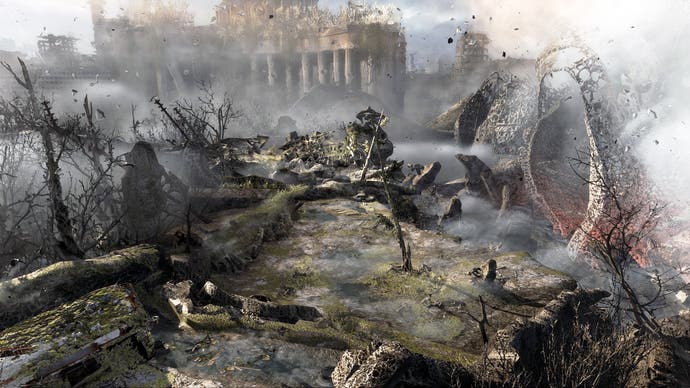
Fallout 4's post-apocalyptic Commonwealth is a place forever altered by nuclear devastation, but it has a rugged beauty. It extends Metro's virtual world by 200 or so more years, and the vast majority of what we explore in the Commonwealth are areas not directly hit by bombs. Alan draws quick attention to this by noting powerlines still standing and connected, radar dishes still in relatively good nick, and water towers not having collapsed. Therefore, the main post-apocalyptic feature here is the fallout and radiation that remains in the earth, air and water.
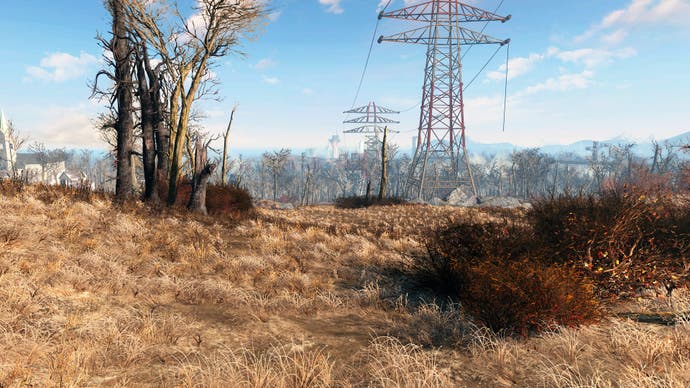
Across the rather barren landscape, nearly all the trees are presented as dead or near-dead; all bare-limbed, foliage-less and looking fragile enough to be pushed over. This raises an eyebrow: "Plant life is very resilient', Alan says, "something would have come back unless the radiation was so utterly, utterly enormous." It would take an extraordinary amount of radiation to hang around constantly in order to make the land as barren as that, especially given the large, 210-year-long timescale that runs from impact to the Sole Surivivor's escapades.
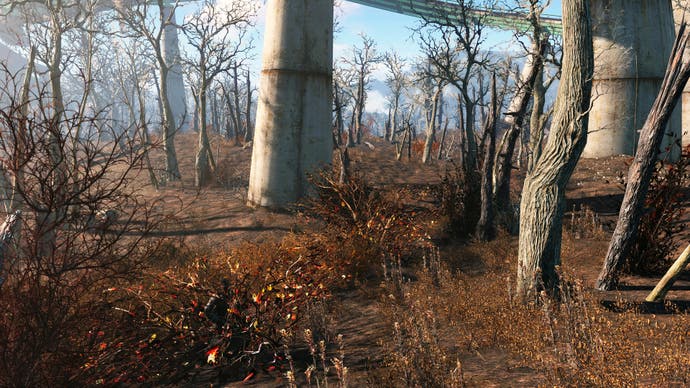
After the disaster at Chernobyl, fruit trees laden with crops went through their normal life cycles with no interruption - apart from being incredibly radioactive. Some plants continued to grow but were victims of gigantism in the year after the event (soon to be eliminated by natural selection, apparently), but still, this presents the extreme resilience of plants. They will keep coming back. Therefore, Fallout 4's is a strange mix because the land is presented as so utterly devastated by the radiation that even trees would fail to return to life, but with plants that are growing with radiation. This is not what we would expect - there should be more vegetation due to plant life's resilience, or there should be zero plant life as the level of initial and residual radiation would not be conducive to life at all.
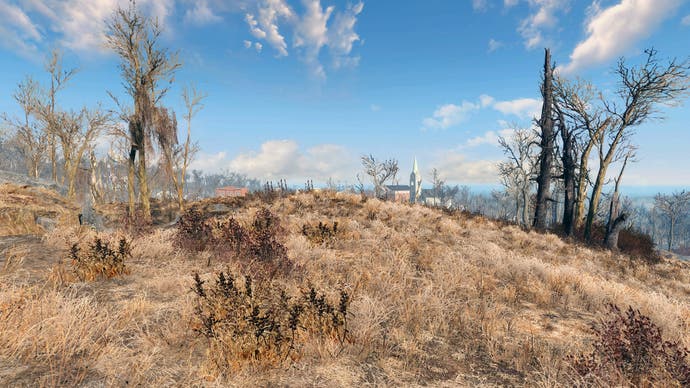
So, if the land is so irradiated that barely anything is growing, and trees have not returned, then how can the Commonwealth's people be eating a wide range of agriculturally viable crops? Crops did return to Chernobyl's surrounding landscape, for example, after that particular nuclear disaster and some residents who refused to move lived off the land despite the radiation concentration - so this is "possible". This is represented in Fallout 4, as even the Sole Survivor eats food contaminated with rads; but there are no recovered trees and lush shrubbery alongside these contaminated foods as there are in Chernobyl. It's a bit like Fallout 4 is having its cake and eating it.
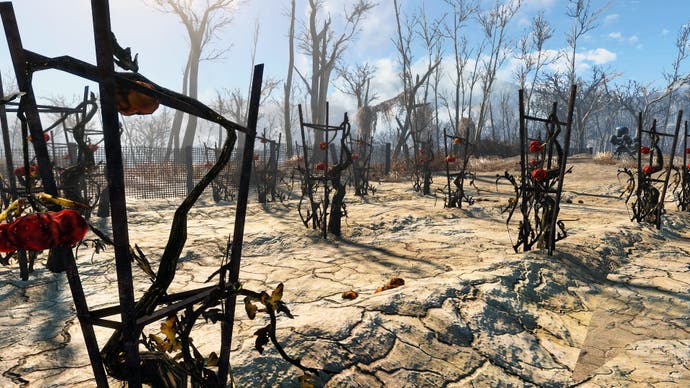
While Fallout 4's post-apocalyptic landscape looks like it was built with a healthy dollop of artistic license, it still works as a video game setting. It is still believable as a post-apocalyptic world. It is heavily-detailed, littered with the telltale signs of devastation, and life itself looks believably altered. All of these elements combine to tap into our fantasy post-apocalypse. However, in ruthless reality, the landscape probably wouldn't look like this. As Alan says, "It doesn't quite add up."
"You could research this forever," Alan says. And, of course, that's true. We are set firmly in the realm of the hypothetical, with only a certain amount of hard data to draw upon. However, by taking a closer look at these landscapes and drawing upon opinion from experts and local officials who keep nature at bay and ensure the maintenance of our manmade structures and systems in real life, we can see the post-apocalyptic lands of games are, on the whole, grounded in "reality".
